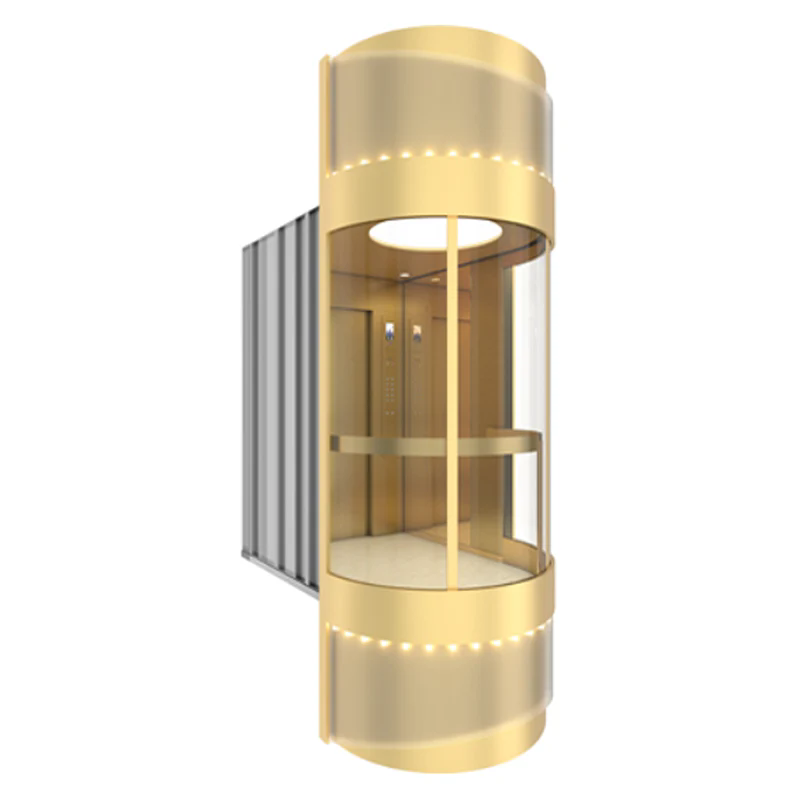Passenger Elevators: Enhancing Accessibility, Efficiency, and Safety in Modern Buildings
2025-04-22
Passenger elevators are an essential part of modern infrastructure, providing an efficient and convenient way to transport people between different levels of a building. They have become a standard feature in multi-story buildings, such as residential complexes, offices, hotels, and shopping centers, helping to move large numbers of people quickly and safely. The design and functionality of these elevators have evolved significantly over the years, making them an integral part of daily life in urban settings.
One of the key advantages of passenger elevators is their ability to save time and energy. Without elevators, individuals would need to use stairs, which can be both time-consuming and physically demanding, especially in tall buildings. For elderly people, those with disabilities, or anyone carrying heavy items, stairs can be a significant obstacle. Passenger elevators provide an accessible solution, allowing everyone to move between floors with ease, no matter their physical condition or the weight of the items they are carrying.
The design of passenger elevators has evolved to offer comfort and convenience. Modern elevators come equipped with a variety of features that enhance the user experience, such as smooth acceleration, quiet operation, and spacious interiors. Many elevators also include advanced technology, such as touchless controls, energy-efficient lighting, and safety systems that prevent accidents. These features not only improve the overall functionality of the elevator but also contribute to a more pleasant and comfortable ride.
Passenger elevators are also a crucial component of building accessibility. They make it possible for people with mobility challenges, such as those in wheelchairs or with other physical impairments, to access all floors of a building. This is particularly important in public buildings or buildings that need to comply with accessibility regulations. In many countries, building codes require that all new buildings with multiple floors include elevators to ensure that they are accessible to everyone, regardless of their mobility.
The safety features of passenger elevators are designed to ensure that they operate without risk to the passengers. Modern elevators are equipped with numerous safety mechanisms, including emergency stop buttons, alarm systems, and backup power supplies that ensure the elevator continues to function during power outages. In addition, many elevators have automatic door sensors that prevent the doors from closing on passengers, reducing the risk of injury. These safety measures, combined with regular maintenance and inspection, help to ensure that passenger elevators remain reliable and safe for everyday use.
In addition to their practical functions, passenger elevators also play a role in the aesthetic appeal of a building. The design and materials used in the elevator cabin can complement the overall architectural style of the building. Many buildings feature elevators with elegant interiors, including polished metal finishes, glass panels, and designer lighting, which add a touch of luxury to the experience. The elevator lobby, often one of the first spaces that visitors encounter, can also be designed to create a lasting impression.
Over the years, advancements in technology have made passenger elevators more energy-efficient. Many modern elevators use regenerative drives, which capture and store the energy produced during braking and convert it back into usable power. This helps to reduce the overall energy consumption of the building, making the elevator system more sustainable. Additionally, elevators with energy-efficient lighting, such as LED lights, further contribute to reducing the environmental impact of the building.
Passenger elevators are available in a wide variety of configurations to suit different types of buildings and usage requirements. For example, in buildings with high traffic volume, such as office towers or shopping malls, high-speed elevators are often installed to move people quickly between floors. In contrast, in residential buildings or low-rise structures, slower, smaller elevators may be sufficient. There are also specialized passenger elevators for specific purposes, such as hospital elevators that are designed to transport patients or freight elevators that are used for moving goods. These specialized elevators are tailored to meet the unique needs of their respective environments, ensuring that they provide the most efficient and reliable service.
The installation of passenger elevators can significantly increase the value of a building. For commercial properties, elevators make the building more attractive to tenants, as they provide convenient access to different floors, enhancing the overall functionality of the space. Similarly, in residential properties, elevators can increase the appeal of a building to potential buyers or renters, particularly in buildings with multiple floors or luxury apartments. In some cases, the presence of an elevator can even make a building eligible for higher rents or sale prices.
As cities continue to grow and buildings become taller and more complex, the demand for passenger elevators is likely to increase. The importance of efficient vertical transportation in modern buildings cannot be overstated, as it is integral to the functionality and accessibility of the space. Whether for commercial or residential use, passenger elevators are an essential feature that makes it easier for people to navigate multi-story buildings with ease and safety. With continuous advancements in technology and design, the future of passenger elevators promises even more innovative and sustainable solutions.



